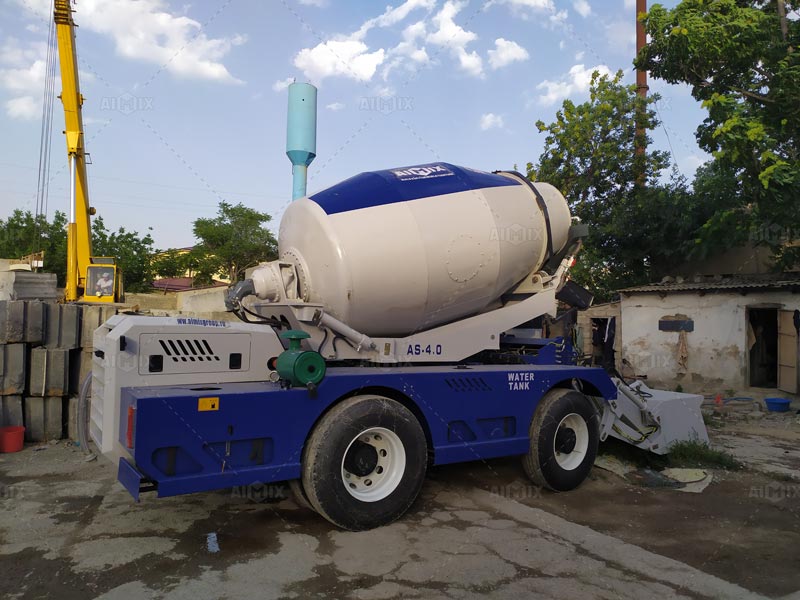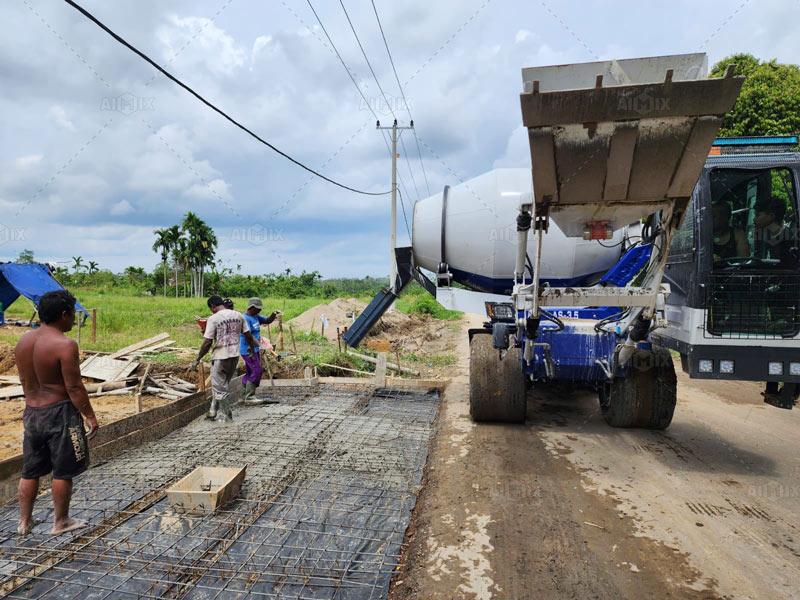In the fast-paced world of construction, maximizing productivity is crucial for the success of any project. Self-loading concrete mixers have emerged as a game-changing solution, combining efficiency with versatility. These innovative machines streamline the concrete mixing process, enabling construction teams to complete projects faster and with higher quality results. This article will provide practical tips for operating self-loading concrete mixers(hormigoneras autocargables) effectively, ensuring that you get the most out of this valuable equipment.

Understanding Self-Loading Concrete Mixers
A self-loading concrete mixer is a type of equipment that not only mixes concrete but also loads the raw materials automatically. This dual functionality significantly reduces the time and labor involved in the mixing process. These mixers come equipped with a loading bucket that collects aggregates, cement, and water, mixing them directly at the job site. This feature ensures fresh concrete production and minimizes transportation costs.
Key Features of Self-Loading Mixers
- Automated Loading: The ability to load materials without additional equipment is a significant time-saver.
- On-Site Mixing: Mixing concrete on-site allows for immediate use, enhancing efficiency.
- Mobility: Self-loading mixers(autohormigoneras Chile) can navigate through various terrains, making them suitable for different job sites.
- Versatility: They can handle different types of concrete mixes, catering to diverse construction needs.

1. Pre-Operation Preparation
Before operating a self-loading concrete mixer, thorough preparation is essential to ensure smooth operation and maximum productivity. Here are some pre-operation tips:
Inspect the Equipment
Before starting any project, conduct a comprehensive inspection of the self-loading mixer. Check for any signs of wear or damage, particularly in the loading bucket, drum, and hydraulic systems. Ensure that all safety features, such as emergency shutdown switches, are functional. Regular maintenance checks can prevent unexpected breakdowns, saving time and money in the long run.
Familiarize Yourself with Controls
Understanding the controls of your self-loading mixer is vital for efficient operation. Take time to read the operator’s manual and familiarize yourself with the layout of controls. Practice using the controls in a safe environment before heading to the job site. This will help you operate the mixer confidently and efficiently, minimizing errors during actual mixing.
2. Efficient Loading Practices
Loading materials efficiently is key to maximizing the productivity of your self-loading concrete mixer. Here are some tips for effective loading:
Plan Your Load Sequence
Before you start loading, plan the sequence in which you will add materials. A typical sequence involves loading aggregates first, followed by cement, and finally water. This order ensures a thorough mix and helps avoid clogs in the mixer. Additionally, consider the weight distribution in the mixer to maintain stability while operating. Get More Information: https://aimixgrupo.com/autohormigonera-peru/
Utilize the Loading Bucket Effectively
The loading bucket is designed for optimal material collection. Position the bucket correctly to scoop aggregates and other materials effectively. Avoid overloading the bucket, as this can lead to inefficient mixing and potential damage to the equipment. Instead, load materials in increments that allow for balanced mixing and easy transportation.
3. Optimizing the Mixing Process
Once the materials are loaded, it’s time to focus on the mixing process. Here are some strategies to ensure optimal mixing:
Monitor Mixing Time
Every concrete mix has an ideal mixing time to achieve the desired consistency and quality. Keep an eye on the mixing duration and avoid over-mixing, which can lead to segregation of materials. Typically, a mixing time of 3 to 5 minutes is sufficient for most concrete mixes. Always refer to the specific guidelines for the type of concrete you are producing.
Check Water Ratio
The water-to-cement ratio is crucial for the strength and durability of concrete. Ensure that you are adding the correct amount of water during mixing. Too much water can weaken the mix, while too little can lead to poor hydration. Using a water meter or gauge can help you accurately measure the amount of water added, ensuring consistent quality in your concrete.
4. Post-Operation Procedures
After the mixing process, proper post-operation procedures are essential for maintaining productivity in future projects:
Clean the Mixer Thoroughly
Cleaning the self-loading mixer(autohormigonera en venta de AIMIX) after use prevents the buildup of hardened concrete, which can affect future operations. Use water and a cleaning solution to wash the drum and loading bucket thoroughly. Ensure that all aggregates are removed, and any remaining concrete is cleaned out before it hardens. Regular cleaning not only enhances the life of the equipment but also ensures high-quality mixes in subsequent operations.
Document Performance Metrics
Keeping track of performance metrics can help identify areas for improvement. Document the quantity of concrete produced, mixing times, and any issues encountered during operation. Analyzing this data allows you to refine your processes, improve efficiency, and troubleshoot problems before they escalate.
Conclusion
Operating a self-loading concrete mixer efficiently requires attention to detail, preparation, and effective practices throughout the mixing process. By implementing these tips, you can maximize productivity and ensure high-quality concrete production on every job site. The self-loading mixer is an invaluable asset in modern construction, and with the right operating techniques, you can significantly enhance your project outcomes and streamline your workflow.
